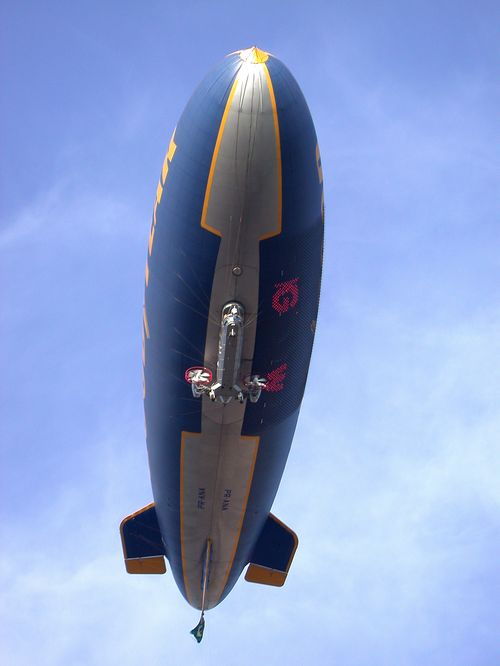Zeppelin NT (New Technology) - History and Development
Zeppelin NT is a semi-rigid helium-filled airship that is being manufactured since the 1990s by the German company Zeppelin Luftschifftechnik GmbH (ZLT) in Friedrichshafen.
The Zeppelin NT class airships have 75 meters in length, diameter of 14 meters and are 19.50 meters wide. They have maximum speed of 125 km/h and can fly 900 km (559 miles) without landing or 24 hours. The Zeppelin NT class airship can carry 12 passengers plus 2 crew, or 1,900 kg of cargo. The Zeppelin NT is able to take-off and land vertically. Only three helpers are required on the ground.
“Semi-rigid airship” means that the hull of the airship is made as a combination of a rigid triangular structure made of graphite-reinforced plastic and reinforced with aluminum and aramid cords. Hull of the airship is a gas cell made of a three-layered laminate: one of Tedlar (PVF), one polyester fabric layer and one polyurethane layer. Zeppelin NT has three engines, two lateral and on aft that use aviation gasoline. Two lateral engines can tilt and can be turned 90° upward or 30° downward and make airship capable of vertical take-offs. Aft engine powers a pushing propeller and a steering propeller.
To this day, five Zeppelins NT ("Neue Technologie", German for “new technology”) were built. Design and construction was initially funded with money left over from the earlier Zeppelin Company which Zeppelin Luftschifftechnik GmbH considers itself the successor of. Fund that belonged to earlier Zeppelin Company was under the trusteeship of the Mayor of Friedrichshafen was legally only for development of airships and in time grew enough that it could be used. Design began in 1989 and construction of a prototype began in 1995. It was finished in 1997 and had the first flight in the September of the same year. The prototype SN-01 was christened D-LZFN Friedrichshafen on the on July 2, 2000, one hundred years after the first Zeppelin first test flight. From 2001 Zeppelin NT is manufactured in series.
Zeppelin NT is used for tours, as observation platforms for photographers and television commentators covering major events, for research missions for environmental observations, troposphere research and natural resources prospecting.
D-LZFN, Friedrichshafen, the prototype Zeppelin NT was intended to be used for training pilots, for special flights and for presentations but it had some other purposes as well like radio experiments during Oktoberfest and mail-carrying. It was irreparably damaged on 20 September 2007 and replaced in 2012 with the ship also called D-LZFN.
D-LZZR, Bodensee was made in 2001 and used for commercial tourist operations. On March 2, 2004 it was sold to Nippon Airship Corporation in Japan. It was transported by ship to Japan, although it had to follow the historical route of the 1929 World Tour of the famous dirigible LZ127 Graf Zeppelin, because of the problem with Russian authorities.
D-LZZF, Baden-Württemberg first flew in February 2003. It is used in passenger service and for marketing.
D-LZNT, Eureka, fourth in the series, finished its first flight on May 21, 2008. It was used for sightseeing and pleasure flights over eastern London, for advertising. It was grounded on November 14, 2012.
